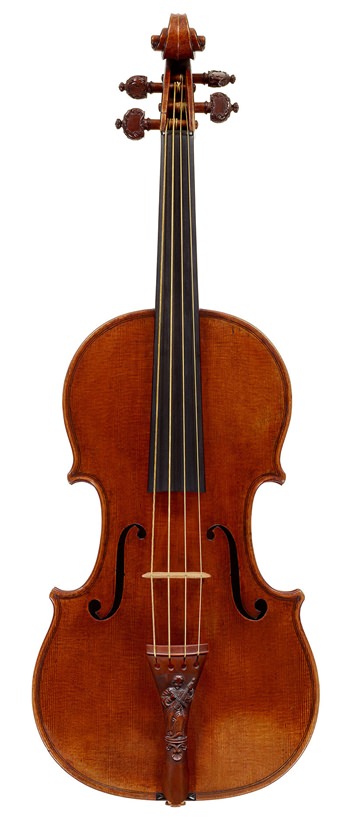
The other day I was watching a video in which someone was playing one of those electric violins and an ugly thing it looked too, a far cry from the beautiful instruments made by the great violin makers of the Renaissance. It didn’t sound much good either but then perhaps I am a bit old-fashioned.
Some people are surprised to know that the word “fiddle” is used quite a lot in British orchestras. The first and second violin sections are often referred to as the “first and second fiddles”. Once, when I was helping out as an orchestral manager and checking whether everyone had got their music, quite unwittingly I created an unfortunate spoonerism and loudly asked the first violin section, “Have you all got the piddle farts?” Strangely, no one seemed to notice but perhaps they were too taken aback to react.
The violin has been around since the early 1500s although bowed strings were known in Europe just before the tenth century. The earliest evidence of the violin’s existence is in a 1529 painting entitled Madonna of the Orange Trees by Gaudenzio Ferrari in which a podgy infant of indeterminate gender is playing what is clearly a three-stringed violin. We know that the violin family, which also included the viola, cello and double bass, was clearly established by 1556 because the instruments were described by Philibert Jambe de Fer in his treatise Academie Musicale. They existed side-by-side with the older family of viols but the brighter, louder sound of the violin eventually won the day.
Although no one is certain who designed and built the first violins, the credit is usually given to Andrea Amati of Cremona in Northern Italy. In his hands, the instrument took on its present form. The Amati family workshop became a magnet for student violin makers. Two of them were Antonio Stradivari and Andrea Guarneri, who eventually became the finest violin makers of the seventeenth and eighteenth centuries.
Both Stradivari and Guarneri (known also by the Latinized form of their names, Stradivarius and Guarnerius) made significant improvements to Amati’s designs and their instruments sounded louder and richer in tone. They’re still being played today by top professionals and many of the instruments are given names, often that of the first owner. They don’t come cheap either. One 1721 Stradivarius, known as The Lady Blunt set a world record in 2011 when it sold for almost sixteen million dollars. Stradivari produced more than a thousand instruments half of which still survive. Less well known is that the Stradivari family also produced cellos, guitars, violas and harps. For three hundred years, violin-makers and scientists have studied the instruments made by these brilliant craftsmen but no one has yet learned the secret of their legendary superb sound.
In this recording Sean Avram Carpenter performs on a beautiful 1559 violin made by Andrea Amati, the earliest of the great luthiers of Cremona. This is a much older and rarer violin than Stradivarius and Guarnerius instruments and it’s a remarkable example of a Renaissance violin. The instrument is beautifully decorated and it’s thought that it was originally part of a set presented to Philip II of Spain on his marriage to Elisabeth of Valois in 1559.
In this unaccompanied piece, you can clearly hear the soft and delicate tone that was characteristic of Amati’s instruments. The Sonatas and Partitas for Solo Violin is a set of six works which Bach completed in 1720 though strangely not published until 1802. Incidentally, the name Partita is a seventh century term for a suite of dances written for a single instrument.
In this video, the brilliant Alexis Hatch plays a 1699 Stradivarius or a Strad as they’re affectionately known in the music business. The music writer Miles Hoffman says of the Stradivarius tone quality, “there’s a sweetness to it, there’s a depth of sound…you have the sense that no matter how much sound is coming out of the instrument, somehow or other there’s always more. It’s like a great race car – there’s more power than you need and it responds to the slightest touch.” Just listen to the gorgeous richness of the low strings at 03:39 onwards and the fabulous singing tone in the high register a bit later.
This lovely concerto dates from 1877 but Goldmark also wrote a second violin concerto some years later. It was never published and sadly thought to be lost. Of course, it could be languishing in a museum or dusty attic somewhere – just waiting to be rediscovered.
 |
 |
 |





